21. Maisons Closes
Words sent and stamped from Paris.
“My heart is crowded full of foolish thoughts / Like early flowers in an April meadow, / And I must give them to you, all of them, / Before they fade.”
by Sara Teasdale, from “a November Night” (2019)
01/04/2025, London, UK
My dear,
“Your definition of tame is skewed” is what a beloved friend of mine told me earlier this month. Cue gasps, cue shock, cue sworn secrecy. He was right, of course— his comment came in the midst of an enthusiastic description of my visit to a gallery of vintage and antique erotica, after all. Not salacious to me, but perhaps, outrageous to thee? Who are we kidding, if you’re here, it means we are birds of a feather; that bird being a raven, my dear. Lately, birds have been flocking and gathering in my mind. In another life I wrote a poem that ended with the phrase; “If I see but a single bird fly over, I know the time is right”, and I can’t seem to shake that silly line every time I ask the sky a question and am rewarded with a feathery silhouette. Birds are everywhere, if you know to look for them. There was a woman on the bus, on my way to ballet class, with a fantastically gilded birdcage that turned out to be a standing lamp. Only the brightest illusions for daily life; light from inside of the prison. Birds, flight, cages.
I’m telling you all of this, because I know, my dear, that you are like a blank diary page to me. You are a shadow on the wall of the cave which I so adore. And, no longer impaled by rose thorns, I am free to rant and rave as I wish. In Dutch, to be sound asleep is to “sleep like a rose”. Remnants of last month’s research still remain, evidently. But sleepwalking through life, I am not. This past March for me was one of stewing, of simmering, never roasting nor burning. I had the fantastic honour of performing some of my poetry at Ethereal Maison on the 7th, of re-uniting with Paris, and of hosting a chainmail party at my place, candlelight and all. Thematic and appropriate. Gloriously medieval. Oh, how I revelled and relished.

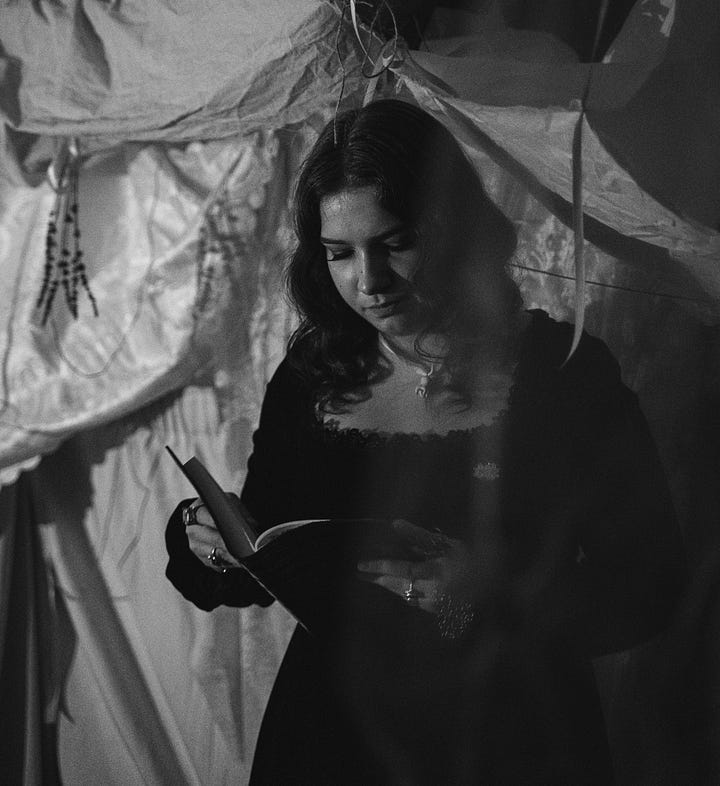
To recap, March was the White Lily Society month of fairytales, which was celebrated with a whole host of new submissions curated, edited, and spotlighted just for your viewing and reading pleasure. There was a monstrous poem succinctly blending the notion of the “femme fatale” with folklore, a poem serving as a lyrical wake-up call for a liberated Sleeping Beauty, and a patchwork poem blending fairytale and obsession. There was a beautiful chainmail hennin crafted to merge girlhood, play, and protection. And two short stories unfolded their gold-spun narratives; one, a coming-of-age fairytale translated for the modern world, and one, a visceral fable about consent, hunting, and patriarchal tradition. Last but not least, we ventured out of Western narratives to learn the stories of the Seven Queens of Sindh and their particular Intersection of Love and Violence(tm).
☆ Looking towards the present now, there is also, included in section III of this newsletter, a juicy literary giveaway to celebrate us hitting 2k society members on Instagram, and to further the White Lily Society’s Indoctrination, so be sure to check out that section for a chance to expand your library, my dear <3
Overall, plenty to chew on this month, so unlock your jaws and devour!
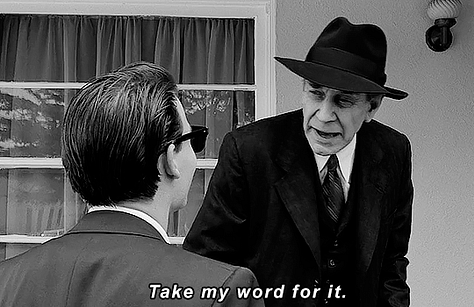
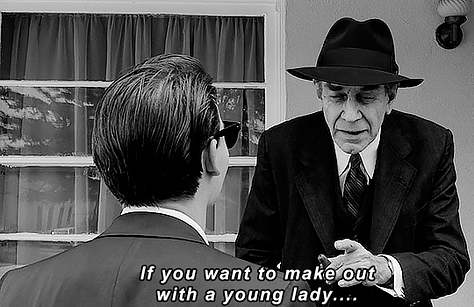
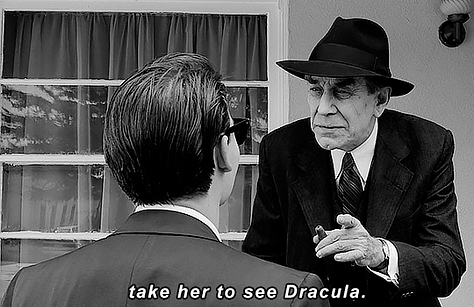
This newsletter contains the following sections:
I. Archive Sources // II. Parisian Prowl // III. [to be Given Away] // “On the List: April” // Outro
I. Archive Sources
“My only books are Sade’s diaries and the Bible. And I haven’t read the Bible.” // “I do all my writing in bed; everybody knows I do my best work there.”
Quote from the film “House of Tolerance” (2011) // Quote by Mae West
In lieu of a distinct themed list of archive sources, what I have curated for you today, my dear, is a cabinet of literary curiosities covering Anaïs Nin, horror cinema, and erotica. Some things of interest to me lately, some things of interest having gone to Paris (which is the primary topic of this newsletter), and some things that I never seem to stray very far from. A lost and found again directory of curiosity.
“Anaïs Nin: An Interview” - link.
Anaïs Nin is one of those writers who, with every bit and piece I read, seems to move in closer and closer to my heart. Whether it’s her fiction, her erotica, or her extensive diaries, there is a certain level of tenderness in her writing that tenderises me in turn. She treats her subjective experience with the utmost respect and seriousness, believes in the depths of her feelings. This interview with her from the 70s talks a little bit about that, as well as her closeness to psychology, and her methods of writing. It’s short, but sweet, and more Nin is always welcome if you ask me.
“I think it would help in this way: symbolism is a language we have to learn-I mean we have to learn it to live. We have to understand our symbolic acts, our symbolic behaviour” // “The novelist today works parallel to the psychologist, recognizes the duality and multiplicity of the human personality”
“There’s Nothing Scarier Than a Hungry Woman” - link.
Horror often plays around with consumption, with devourance— most recently, 2024’s “Nosferatu” used appetites to wrestle with the vampiric core of its story. But what happens when it is distinctly women eating, gnawing, and devouring? Laura Maw’s exploration on female appetites in horror is both personal and contextual; talking about various portrayals of women eating in horror films, she conjures up a twinned effect of hunger and disgust, of desire and fear. Food is complicated for many women in their day-to-day life, and it fuels this otherworldly gruesomeness that washes over us when we watch the women of horror eat, and revel in their eating. A wonderful essay; food for thought.
“As a woman, to say that you have found eating uncomfortable at times is not particularly groundbreaking. The anxiety has become mundane because it is so common for women, but isn’t that in itself noteworthy? Horror invites us to sit with this disgust, this anxiety, to acknowledge our appetite, to refuse to let us suppress it. There is something uncomfortable and enthralling about watching a woman devour what she likes with intent.”
“Discourse and Intercourse, Design and Desire in the Erotica of Anaïs Nin” - link.
“Leave out the poetry… concentrate on the sex”. That’s what Anaïs Nin was supposed to do in writing her erotica for the mysterious and unnamed Collector who commissioned it from her. And yet, Nin’s erotic work throughout “Delta of Venus” (published 1977) and “Little Birds” (published 1979) is deeply poetic, sensual, and emotive in spite of her patron’s steering towards more straight-forward explicit writing. Poetry for Nin was an aphrodisiac, and this paper uses this reasoning to analyze her erotic writing; its morals, its opinions on sex and pornography, its frameworks. Despite bringing up a multitude of thinkers, including the likes of Foucalt, Bataille, and Barthes, this is a theoretical read that never dulls itself, and excites at every turn.
“In contrast, the collector represents one of the two stereotypes of the pornographic mind. He is the one who fears, and thus has to forget, the reality of the body. His stance toward sexuality divorces the body (eros) from the head (logos). Not being able (potent) to face the body naked, he wants the pornographic discourse to be naked instead, namely unadorned with poetry. By avoiding, therefore, an encounter with the presence of a real lover, the collector, or the stereotype he represents destroys the flesh of the body […].”

II. Parisian Prowl
“At five o'clock Paris always has a current of eroticism in the air.” // “Beauty makes me hopeless. I don't care why anymore I just want to get away. When I look at the city of Paris I long to wrap my legs around it. When I watch you dancing there is a heartless immensity like a sailor in a dead-calm sea. Desires as round as peaches bloom in me all night, I no longer gather what falls.”
by Anaïs Nin, date unknown // by Anne Carson, from “On Hedonism” (2015)
Getting to the main event of the newsletter now, which is, of course, my adventures in Paris this past month. I have previously covered my August 2024 Paris trip in newsletter 12, including my musings on why my original trip there spectacularly imploded all the way back in 2019. Now, that failed trip was actually supposed to be a mother-daughter trip, a last hurray before my moving out and moving overseas. But as fate would have it, Paris would have to wait another five years for us, until recently, when me and my mom finally made it there. A satisfying ending wrapped in a bow for a half decade long hero’s journey, so to speak. The meat and bones of this newsletter, then, will primarily concern itself with recapping all the wonderful things I saw and did on my four day trip.
Now, at risk of repeating myself, I always like to shed some light on my film camera preferences whenever film photos are involved, as they are in this travel diary. Just to root out any confusion, my dear. To be ahead of the questions. When it comes to film, I vastly prefer working with a simple, no-fuss “point and shoot” camera. Currently, that is the Canon Sure Shot 85 Zoom, but there are plenty of very affordable (£10-20) point-and-shoot film cameras available second hand! These tend to be compact, easy to work with, and most importantly, they tend to hold up being tossed in a tote bag and dragged across the continent. As for film stocks, I opt for Kodak ColorPlus, or Kodak Gold when the former is unavailable. Gold tends to skew the entire spectrum towards a warm golden orange-red, while ColorPlus also skews warm but leaves very vivid blues and greens intact at least. On this trip, I shot a roll of Kodak Gold.
Enough of the technical stuff, let me start my rambles! I intend to paint you a very pretty and thorough picture. First of all, Paris would simply not be Paris without some astoundingly beautiful architecture (dare I say their architecture is nicer overall than London’s?). The minute you step out of whichever metro station, there is no way around all the towering Parisian buildings, ornate wrought iron balconies, and picturesque streets melting into one another. But the churches in particular are ornamental enough to make the most obtuse of souls believe, especially diehard fans of Gothic architecture like myself. We briefly stopped by the “Notre-Dame” on our first day to check on its restoration— I remember the day the cathedral burned in 2019 so vividly; my arts teacher wept the most bitter tears I have ever witnessed at the news. Fortunately, it seems progress on the cathedral work is nearing completion. Additionally, we walked into the beautiful “Église Saint Sulpice” in the South (6th arrondissement), as well as my beloved and familiar “Église Saint-Eustache” in the 2nd arrondissement. Both are marvels of human creation, to be sure. Divine monstrosities of brick and adornment.

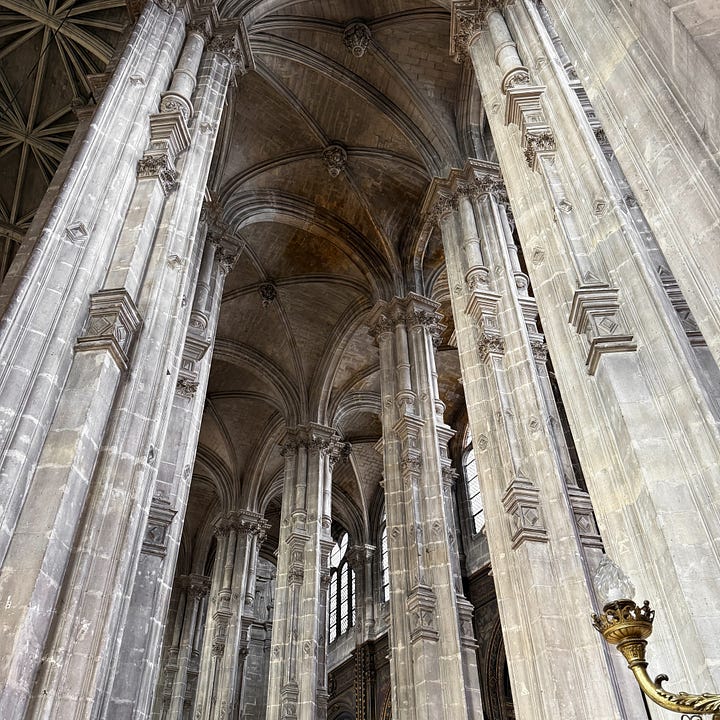
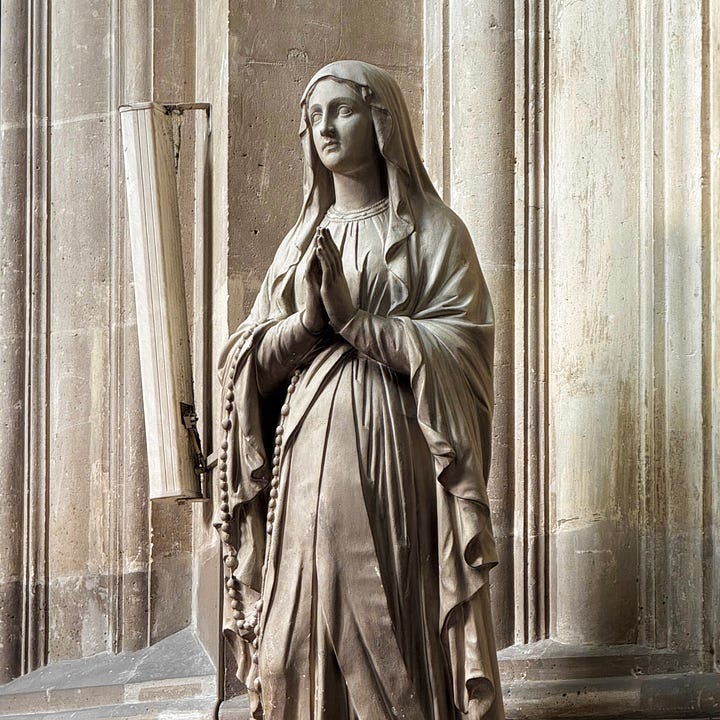

Of course, a little bit of sightseeing never hurts anybody. I, certainly, have no moral obligations to treading familiar paths when finding myself in an unfamiliar city. My previous Paris coverage also included some of the more well-known Paris haunts, like “Shakespeare & Co.”, “Les Invalides”, and “Père-Lachaise Cemetery”— all familiar ground I do not intend to re-tread today. Instead, if you wish to find more niche, esoteric, off-the-beaten-path recommendations, I could not in good conscience forget to mention my adored Atlas Obscura, which sets out to do just that. It’s a community-led guide to the “world’s hidden wonders”, and a favourite not-so-secret tool in my arsenal. As for this trip’s sightseeing, we had a look at the daunting “Basilique du Sacré-Cœur de Montmartre” (also commonly known as just the “Sacré-Cœur”). There’s a wonderful view from in front of the cathedral, stretching out all over Paris, if you’re willing to climb Montmartre’s famous steps and fight off droves of tourists, that is.
Speaking of fighting off droves of tourists, French author Jean-Paul Sartre famously wrote that “Hell is other people”, but I vehemently disagree. Hell is located squarely in the Louvre, right underneath its famous glass pyramids. Safe to say, I’m not a fan of this museum behemoth. It’s just too big, too overwhelming, too overstimulating. Hot and busy and loud. The queues are pretty much always killing (don’t bother showing up early), and the sheer size of the museum means that by the time you’re at the works you itched to see, you’ve seen dozens if not hundreds of comparable masterpieces, intricate sculptures, and gilded rooms. The eye can indeed be blinded to beauty, no matter what the philosophers might assume, my dear. It doesn’t help that the Louvre has 400 rooms and 35.000 artworks to its name either; a handful of lifetimes wouldn’t be enough to give every piece of loveliness the attention it so rightfully deserves.
Additionally, half of the works I personally wanted to revisit from my last visit in June- when me and my dear friend overlooked the museum closing at 6pm and got unceremoniously herded out- were archived or in storage without clear notation on the website, so me and my mom just wandered around the crowded halls this time, tried to keep our wits about us, and saw the majority of the limited time couture exhibition sprawled through the impressive Napoleonic apartments. To be fair, the armour dress alone did make up for a significant part of my suffering, though definitely not all of it.
Nevertheless, if I had to make up a list of my personal favourite “permanent”1 pieces of the Louvre, it’d go something like this;
[Painting] Paul Delaroche, “the Young Martyr” (“la Jeune Martyre”), (1854-1855)
[Painting] Anne-Louis Girodet de Roucy-Trioson, "the Sleep of Endymion"(“Endymion. Effet de lune, dit aussi Le Sommeil d'Endymion”), (1791)
[Painting] Bernardino Luini, "Salome with the Head of Saint John the Baptist" (“Salomé recevant la tête de saint Jean Baptiste”), (1520-1530)
The zodiac-adorned ceiling at the “Gallerie d’Apollon” (room 705)
[Sculpture] Antonio Canova, “Psyche Revived by Cupid’s Kiss” (“L'Amour et Psyché à demi couchée”), (1787-1793)
[Sculpture] Benvenuto Cellini, "Nymph of Fontainebleau" (“La nymphe de Fontainebleau”), (1543)
The entire religious painting section, especially room 708



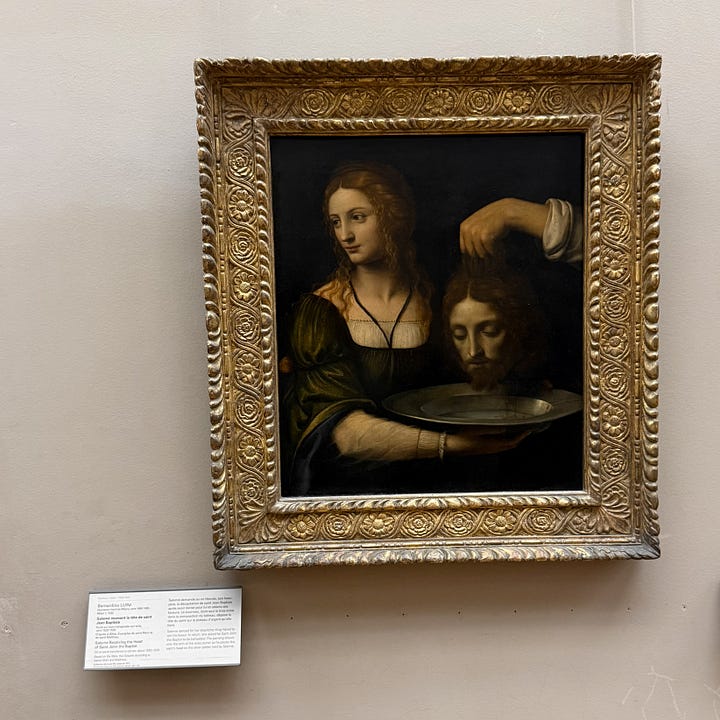
One thing we didn’t have time for on our limited trip (my feet started bleeding on the first day! Oh, the horror!) was to walk by the “Musée de la Magie”, or the magicians museum. Not necessarily because I plan to don a top hat and materialise white rabbits any time soon, charming as it may be, but because the house the museum is based out of actually used to be the [in]famous Marquis De Sade’s home— he’s the root of the word “sadism”, just in case you’re yet unfamiliar with his exploits. A perfect little mention to announce this slightly more risqué or even tittilating section of recommendations. Spoiler alert: we’re about to take a walk past some historic Parisian brothels. So don’t go clutching your pearls saying I didn’t warn you.
Walking up to Montmartre there is this absolutely stunning neo-Gothic façade on one of the buildings, which used to hide a much more shocking past: it used to be a brothel for unconventional sexual appetites. In fact, the brothel or “maison close”2 formerly hidden here was the infamous “Chez Christiane”; a brothel specialising in SM and kink, complete with a fully stocked dungeon to match— not for the faint of heart, my dear. It was so famous, in fact, that it was elaborately mentioned in the notorious 19th century sex tourism guide “Le Guide Rose”, and even has its own spot on the “Brothels in Paris” Wikipedia page; perhaps good material for further explorations? That’s my next trip’s walking tour sorted, at least.
Another tittilating (favourite) stop was “Au Bonheur du Jour” in the 2nd arrondissement. Be warned, this place is very much appointment only, but if you manage to weasel your way in, you definitely won’t be disappointed. The wonderfully eccentric Madame Nicole Canet has been running this small gallery for twenty-six years, acting as an “archeologist of erotica”, collecting antique nude and erotic photographs, paintings, and drawings, from the 19th and 20th centuries, as well as all matter of similarly themed objects and curiosities. Browsing through the warm wooden archive drawers, you’ll find everything from vintage bondage photos to more simpler (still nude) fare. You could, potentially, easily spend hours just seeing a fraction of this wonderfully extensive and impressive collection.
Mme Canet also writes and composes some fabulous coffee table books, in both French and English, with some of the “feminine” themed ones focusing on the extensive history of Paris brothels. I picked up “Décors de Bordels” (2019), which focuses on all the outrageous decor these 18th and 19th century brothels used to boast. The furniture alone makes a palace pale in comparison to these pay-by-the-hour rooms! Brothels like the world famous “le Chabanais” in Paris used to be both luxurious and eccentric, with sphinx bathtubs, a cavernous basement resembling a grotto, and intricately themed rooms for every fantasy. What remains of “le Chabanais” is actually right down the street from “Au Bonheur du Jour”, as Mme Canet gleefully pointed out. The remnants of their serpentine wrought iron elevator can still be seen through the windows outside of what is now just an ordinary office building. It’s a shame my French isn’t the sharpest, or I would have loved picking Mme Canet’s brain a little more. Perhaps good motivation to learn? I always do love an exciting connection and a fun story to boot.


Some other, slightly less sensual stops I’d recommend include the previously discussed cabinet of curiosities and taxidermy at “Deyrolle”, and my favourite gluten-free pastry shop “Noglu”, conveniently located within walking distance from one another. Let them eat gluten-free cake? And if you’re in the neighbourhood regardless, stopping at the gorgeous tea shop “Mariage Frères”, checking out the nearby “Ladurée”, or stopping by maximalist lifestyle shop “Officine Universelle-Buly”, be sure to walk past the commemorative plaque attached to the building in which the treaty ending the US revolution was signed. A simple marble plaque, yes, but quite a big moment in world history. Something to reflect on along the way, with a pastry in hand.
As for culinary delights, you can never really go wrong with a good, traditional French bistro. The atmosphere alone is enough to compel you, lull you off into a far forlorn time of poets, salons, and capital r Romance. My current favourites include “Le Procope”, which happens to be the oldest café in Paris, having opened in 1686. It’s a place of beauty, with deep red walls, gorgeous china tableware, and candlelight abound. Historic too, as the likes of Voltaire, Benjamin Franklin, Marat, Napoleon, Victor Hugo, and Robespierre have all dined there at one point or another. My other recommendation would be for the more contemporary “Bistrot Vivienne” near “Au Bonheur du Jour”, if only for the fact that my diet here in London is 99% quinoa salads and pomegranate seeds, and that is exactly what they had on their menu; the “spring salad” with quinoa, avocado, smoked salmon, pomegranate seeds, and a zesty/herby cottage cheese dressing was exquisite. Just like I had never left home at all.
With a due amount of embarrassment, I would hereby officially come out as a Paris museum novice. A lack of Paris museum experience which I’d like to chalk up to a matching lack in time. Alas, every time I find myself in the city of love, I am passing through, not settling in. I rarely find the time to even open a book and read a full sentence before I find myself whisked away again, a rude awakening in a Eurostar seat. But this time, I had a recommendation under my belt, and a few hours to spare. One of my most revered stops was “Musée de Cluny”, which was recommended to me by my dear friend, and resident medieval expert Anna de Waal— and oh, am I glad I went! After the torturous agonies of the Louvre (of which there were many), Musée de Cluny was like a breath of fresh, rare air.
The museum specializes in all manner of medieval art, and is situated within a 15th century abbey with Gothic features, and the remains of some Roman thermae in the basement. It’s of a much more humble and manageable size than the aforementioned Louvre, being only twenty-two rooms. But despite its supposed smaller size, it packed a tremendously sweet punch right from the get-go. One of the limited exhibitions, showing pieces of the sculptures from the Notre Dame, was a wonderful start, and fortunately had signage in both French and English— a good sign of what was to come. My short afternoon in the museum, I was continually moved by the absolutely gorgeous religious art, and especially all the luscious Gothic bits. When I came to a small chapel with the most breathtaking adornment, I shed a tear or two. Other highlights, plentiful as they are, include the peaceful courtyard with yet more Gothic features, a fascinating set of chainmail, and the famous “Lady and the Unicorn” tapestries, which sprawled out, up and before me. A great recommendation to hereby pass on.
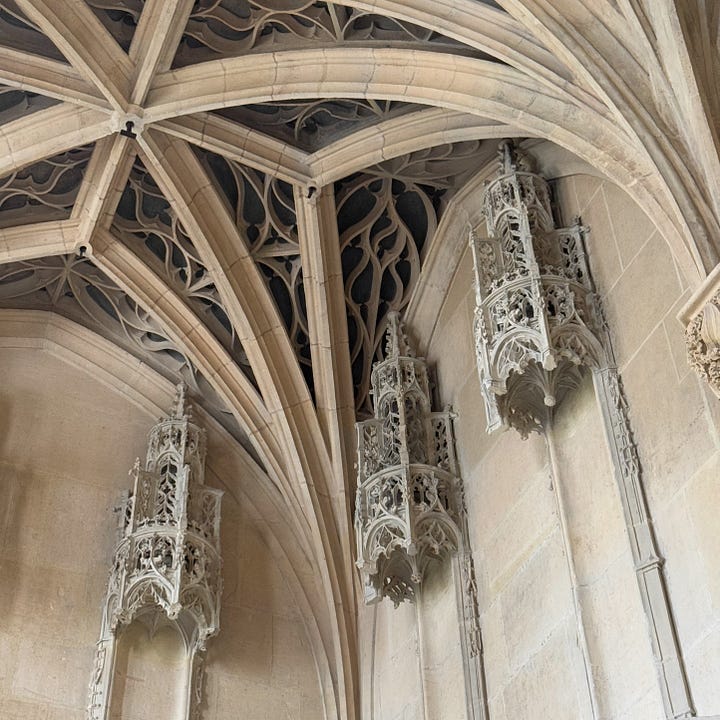
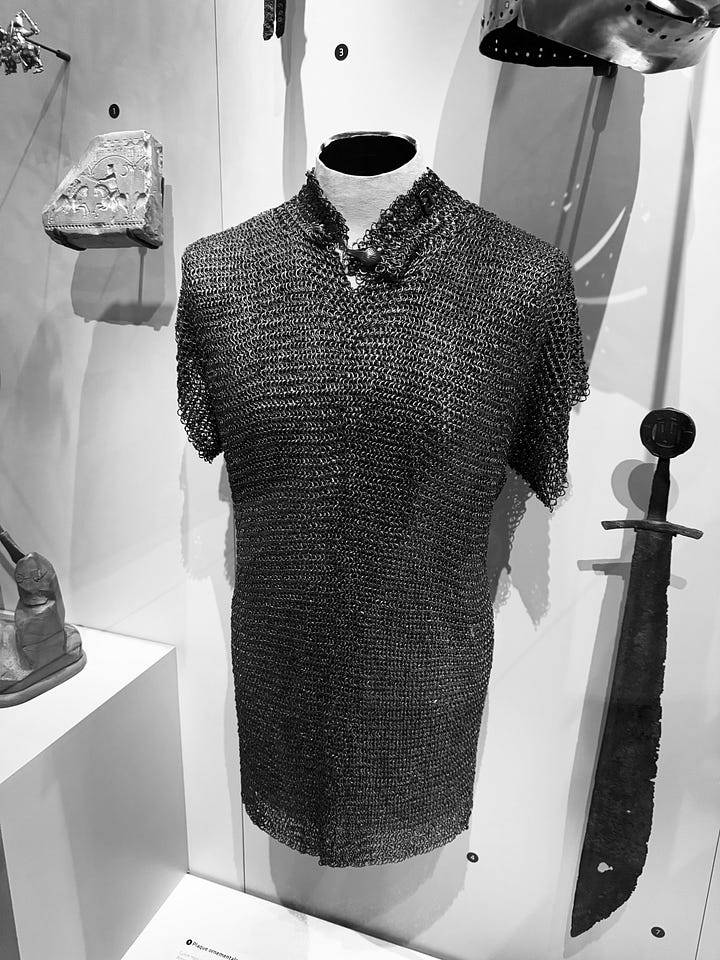
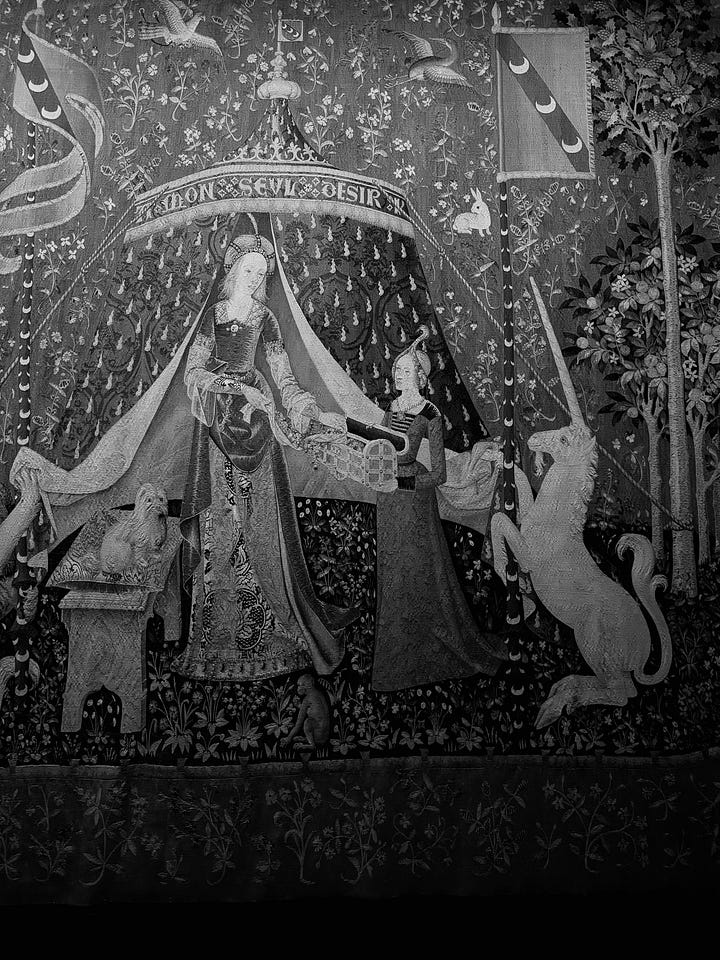
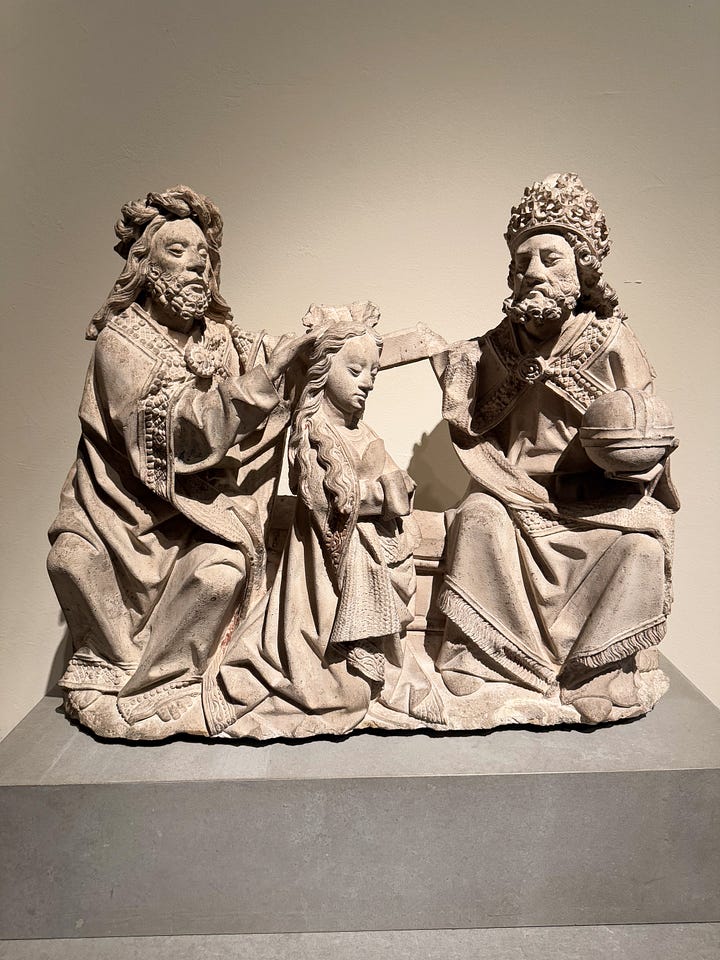
If you know me, you know I absolutely adore visiting cemeteries whenever I can. It’s in the calming effect they have on me, surrounded by nature and the beautiful stonework on the various tombs and gravestones. A respite from the tiring world of the living, if you will. Now, having been to the much more famous “Père-Lachaise” cemetery on my last visit, I determined to shake things up and see a new one this time around. Variety is the spice of life, no? The “Montmartre” cemetery, located in its namesake neighbourhood, is a modest cemetery, tucked away in between residential areas and even under a traffic-filled bridge, making for a fresh visual. Here is where the dead and the living firmly reside as neighbours, and life moves on around them. There’s a small array of the very intricate Gothic tombs you’d be familiar with after visiting “Père-Lachaise”— though the both of those cemeteries absolutely pale in comparison to my beloved “Highgate Cemetery” here in London. Highgate half ruined all other cemeteries for me, I fear. Still, “Montmartre” was a relaxing change of pace for a bit, though one I don’t feel too strongly about. Lovely to pass through, but perhaps not as the centrepiece of your day.
And that is where I’ll leave you, my dear, on a note of relaxation and calm. Just like that, the shortest four days of my life had passed me by, and it was time to get on my lonely train back to the grey skies of London. Au revoir, Paris. I leave you a little bit more of my heart each time I pass through. Though this is certainly not a “goodbye”, but a “to be continued”. There’s still an endless list of former brothels to pass by, odd spots to be discovered, churches to be wandered into, gluten-free pastries to be eaten, and cemeteries to be taken in. As long as there are, trust me, I’ll be back. It’s a promise, not a threat.
III. [to be Given Away]
“I think we ought to read only the kind of books that wound or stab us. If the book we're reading doesn't wake us up with a blow to the head, what are we reading for? So that it will make us happy, as you write? Good Lord, we would be happy precisely if we had no books, and the kind of books that make us happy are the kind we could write ourselves if we had to. But we need books that affect us like a disaster, that grieve us deeply, like the death of someone we loved more than ourselves, like being banished into forests far from everyone, like a suicide. A book must be the axe for the frozen sea within us. That is my belief.”
by Franz Kafka, from “Letter to friends, family and editors” (published 1959)
My dearest collection of songbirds and vultures, the White Lily Society Department of Indoctrination has recently decided that our cult society literacy rates are far too low when it comes to the Intersection of Love and Violence(tm). Thus, to combat the ever-fading star of yearners all over, and to celebrate recently hitting 2k Instagram society members, it’s been decided that a little book giveaway should take place, and the day has come now!
A keen society member like you might have already noticed the post announcing this raffle bounty, but just in case you missed it, allow me to recap the specifics here. The treasure on offer consists of three packages, made up out of two books each; one fiction, and one non-fiction. A picnic for the imagination, and a balm for curiosity, respectively. As such, there will be three society members blessed with new additions to their library, including…
“Eroticism” by Georges Bataille (1957) // “Evil Roots: Stories of the Botanical Gothic”, edited by Daisy Butcher (2019)
Bataille is the go-to for writing on eroticism, death, taboo, cruelty, and suffering. His idea of eroticism as a tool for us, discontinuous beings, to come in contact with the continuous is a pillar of the society’s Intersection of Love and Violence. An academically dense text, but very much worth the trouble.
This collection edited by Daisy Butcher awakened something in me I never really knew before; a passion for the botanical gothic. From an array of killer orchids to deathly moss, and from haunted fungi to detectives on the trail of the roots of evil, there’s something wondrously dark for everyone.
“Death Comes to the Maiden: Sex and Execution 1431-1933” by Camille Naish (1991) // “the Bloody Chamber” by Angela Carter (1979)
“Death Comes to the Maiden: Sex and Execution 1431-1933” is an endlessly fascinating exploration of gender and execution, focusing on the female experience, and the ways in which modesty culture and societally constructed ideas of femininity led to differences in how men and women were executed throughout history. With chapters covering burials and burnings, beheadings, hangings, the guillotine, and the art of immolation, there is something for everybody and every appetite included.
My favourite book of all time, “the Bloody Chamber” is Angela Carter at her best. It’s a collection of dark, sensuous Gothic fairytale retellings, with Carter’s signature dense and velvety description, as well as a distinct preoccupation for the monstrous feminine. The shortest story is only four pages, and the longest is fifty-one, the perfect read for stormy nights or (if you can wait that long) winter’s cold embrace.
“the Sadeian Woman and the Ideology of Pornography” by Angela Carter (1978) // “Sharp Objects” by Gillian Flynn (2006)
Carter’s biting humour and sharp writing style make her the perfect author to take on an overview of the Marquis de Sade’s writing, and pornography in general, with a distinct feminist touch. This book is as sharp as it is witty, and despite being slightly on the denser side, quite manageable in length and scope.
When I read “Sharp Objects” (2006) last year in the Swiss Alps, I was struck by the unflinching gruesomeness of its narrative. Steeped in layers of symbolism surrounding perceptions of female violence, generational trauma, and self harm, this is a gorgeous contemporary Gothic novel disguising its claws under a more traditional crime story.
Hopefully, this has piqued your curiosity, and you’re simply itching to partake, and perhaps win some lovely prizes! This delectable giveaway is open until the 13th of April— you can find ways to participate, as well as full terms and conditions over on Instagram. Be young, and nourish your mind, for it is all we have and all we can hope to hold. Thank you for being a White Lily Society member, always and forever <3.
✧・゚: *✧・゚:* On the List *:・゚✧*:・゚
Exhibitions, Events, and Talks. Starting with the very best, the second of the “petit tragedy” plays, “the Miserly Knight”, is scheduled to be performed for one night only on the 5th of April, and looks to be the event of the month, if their past productions are anything to go by. I’ll be seated, and hope to see you there. Similarly, performance-wise you can catch the brilliant Steph Ritzema, together with a whole host of other live music, performing at the Mascara Bar for "Our Dear Friends" on the night of the 7th.
Magpies beware; the V&A’s new major "Cartier" exhibition opens on the 12th, and is sure to be dazzling— book your tickets in advance and ASAP, as limited exhibitions at the V&A tend to induce public hysteria. But if you prefer something a bit more intimate, there is a free talk all about wicked women and feminine archetypes at the V&A on the 30th of April. Pick your poison.
If newsletter 19 piqued your interest in psychology and psycho-analysis, perhaps a two day online introductory course to Lacan hosted by the Freud Museum will strike your fancy? Tickets are £20-£45. All you curious creatures will also be happy to learn that the Wallace Collection has a talk all about "Reading the Signs in Vanitas Paintings" slated for the 30th, which promises to be interesting fare. Tickets are £20.
Another sure spot for the systemically bored and esoterically inclined is the Viktor Wynd Museum (or; Cabinet of Curiosities), and they have a duo of very promising events this upcoming April as well. The first is a workshop all about the arcane art of scrying, whether with mirrors or crystal balls, taking place on April 6th. Tickets from £32.21. Last, but most certainly not least, on April 7th there will be a lecture all about necrophilia in art, literature, and real history. Taboo beyond measure, yes, but infinitely thought-provoking to be sure. Tickets start at £15.
Film, Music, and TV. Physical media never dies, my dear. Therefore, at the HMV, Ethel Cain “Preacher’s Daughter” (2022) album is releasing on vinyl on April 3rd. In similar fashion, the “Nosferatu” (2024) 4k limited edition edition steelbooks as well as regular dvd/bluray options are launching on the 7th. Time to indulge in some Gothic romance, and maybe make a night out of it.
For music, I’ll never stop singing the praises of my beloved dreamy bedroom-pop band Sunday (1994). Their new single “rain” will start gracing my eardrums on the 11th. If you prefer something simpler, but darker, Isabel LaRosa’s debut album “Raven” is coming out on the 18th, and is sure to fulfil those late night dark pop cravings!
If you’d rather indulge in some (cinematic) decadence, the lovely BFI is screening the satiric and surreal French film "the Discreet Charm of the Bourgeoisie" (1972) on the 4th, 11th, and 26th of April, as well as the Czechoslovakian film "Daisies" (1966) on the 7th and the 23rd, about two women embracing misbehaviour and excess in a rotten world. It seems you’re spoilt for choice.
In the Stars. A few things to note here, my dear. First of all, the yearly Lyriad meteor shower is taking place from April 15th to the 29th, peaking around the 22nd-23rd. There will be a full moon in the sign of Libra on April 13th, as well as a super new moon in Taurus on the 27th. Finally, if you’re planning to do anything witchy, be prepared to save it for the 17th, as Mercury, Venus, Saturn and Neptune will all be in alignment in the sky, making for an especially powerful time to set intentions, hold rituals, or move into a new phase of life.
Obsessive Tendencies: What I’ve Loved Lately
Dark in Love, “Ariadne” dress, [The loveliest “nightgown” to explore your haunted house by candlelight in], £49.99
Nicole Canet, “Décors de Bordels” coffee table book (French), [For the best experience, pick up in Paris and chat with the author!], €79
Charlotte Tilbury, Rock ‘n’ Kohl eyeliner in “bedroom black”, [My go-to for a nice, dramatically black waterline to match my everyday smoky eyes], £24.99
Freud Museum, Sigmund Freud socks, [Love him or hate him; these socks are quite the conversation starter], £12.99
Disturbia, “Necrosis” high neck long sleeve mesh top, [The perfect layering piece for this in-between spring weather], £28
Hollister, easy long-sleeve pointelle baby top in “heather gray” (or try the in-store exclusive white version!), [For my most recent “horror game protagonist” fashion flare-up], £25.95
“I could not live in any of the worlds offered to me — the world of my parents, the world of war, the world of politics. I had to create a world of my own, like a climate, a country, an atmosphere in which I could breathe, reign, and recreate myself when destroyed by living. That, I believe, is the reason for every work of art.”
by Anaïs Nin, from “The Diary of Anaïs Nin, Vol. 5: 1947-1955” (published 1966)
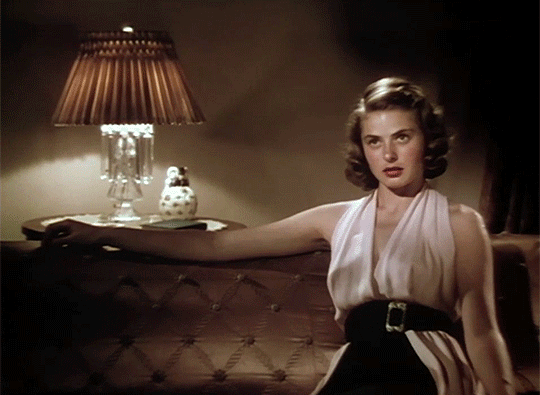
Let me tell you about the oddest dream I had while in Paris. I was sat across a shadowy figure, details of personhood clearly not important enough to be remembered, on the brink of giving them the tarot reading they had evidently paid for. But as I endeavoured to reach for my cards, there were instead… pastries and bread. Eight different ones, some of them nonsensical, spread out as cards would be as I pulled them out. There was a pain au chocolat, yes, and two croissants; one surreal version with bits of fruit in it like a fruitcake. There was a piece of torn off baguette, a cinnamon bun, and pain au raisin. Shaken, I willed through and read the symbolism of each one, working my muscles of semiotics the hardest I possibly could. The raisins and the fruit obviously signified the golden warmth of the sun, wealth, prosperity. The drier breads with their jagged edges were warnings against haste. The buttery pastry dough seemed almost to represent the suit of pentacles; ambition and persistence. In the end, the customer left satisfied, though I felt bizarrely bewildered.
If Freud was here, he’d no doubt find some sexual context within the dream’s symbolism, but I think the point is this; though I am well-equipped to work within my chosen field(s), there will always be curveballs. Pastries instead of cards. What matters, is adaptability. Jung would find that the wish fulfilment achieved within the dream’s structure is one of pure and utter competency. The resolve to not be shaken by the surreal circumstances often thrown at us. Whether life gives you pastries or cards indeed doesn’t matter; what matters is that when your cards turn out to be pastries, or the other way around, you can read them.
Until my next letter,
With love (and violence),
x Sabrina Angelina, the White Lily Society
Currently reading: “les Fleurs du Mal” by Charles Baudelaire // Most recent read: “Sunrise on the Reaping” by Suzanne Collins
White Lily Society links // Sabrina Angelina links
Ne gâchez pas mes conseils de voyage, ma chère. Pour en savoir plus sur mon infinie sagesse, abonnez-vous dès maintenant à la White Lily Society et devenez un martyr des délices.
Always check before going, of course :)
“Maison close” refers to a specific type of legalised French brothel, ran by a madame, and popular in the 19th century.





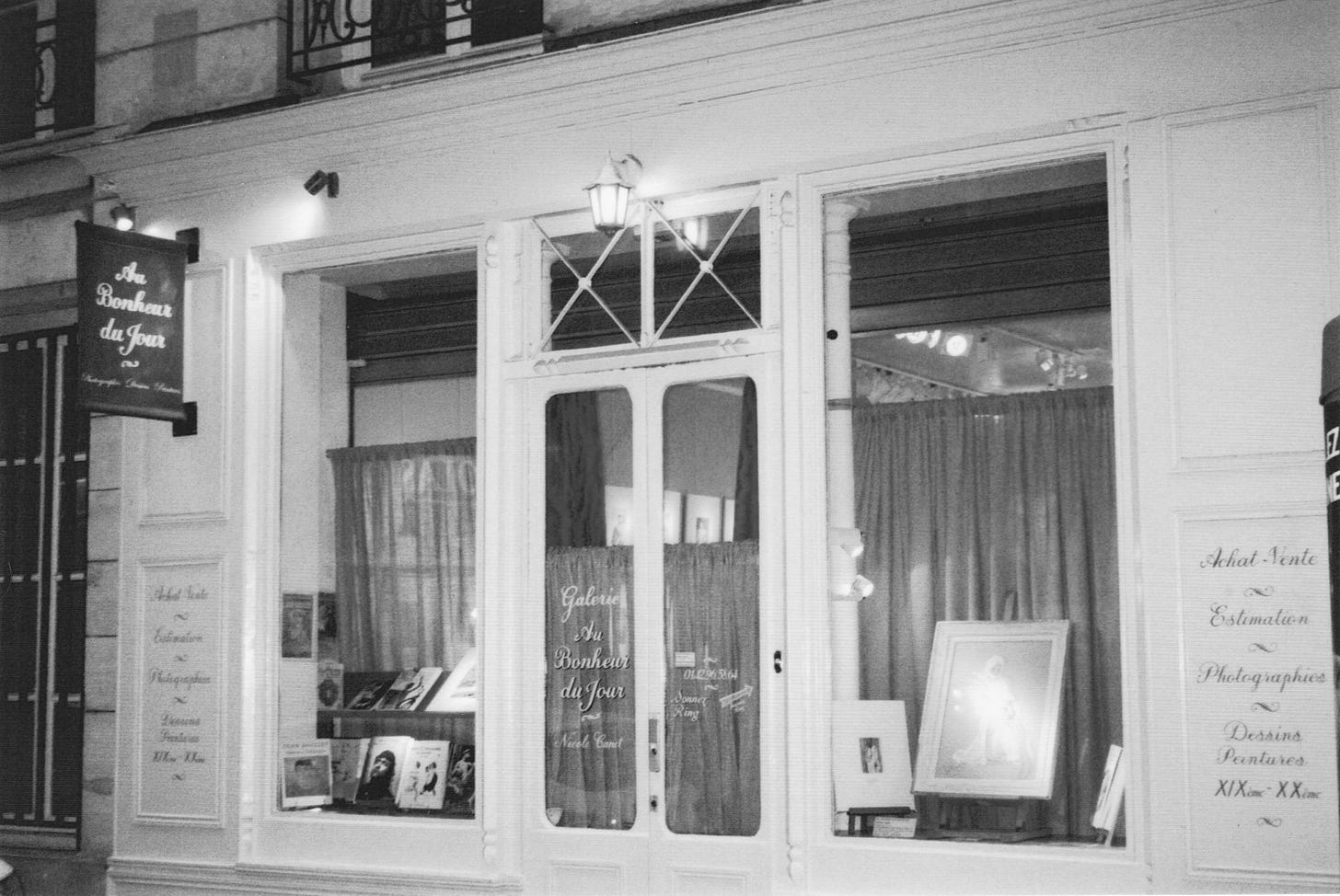

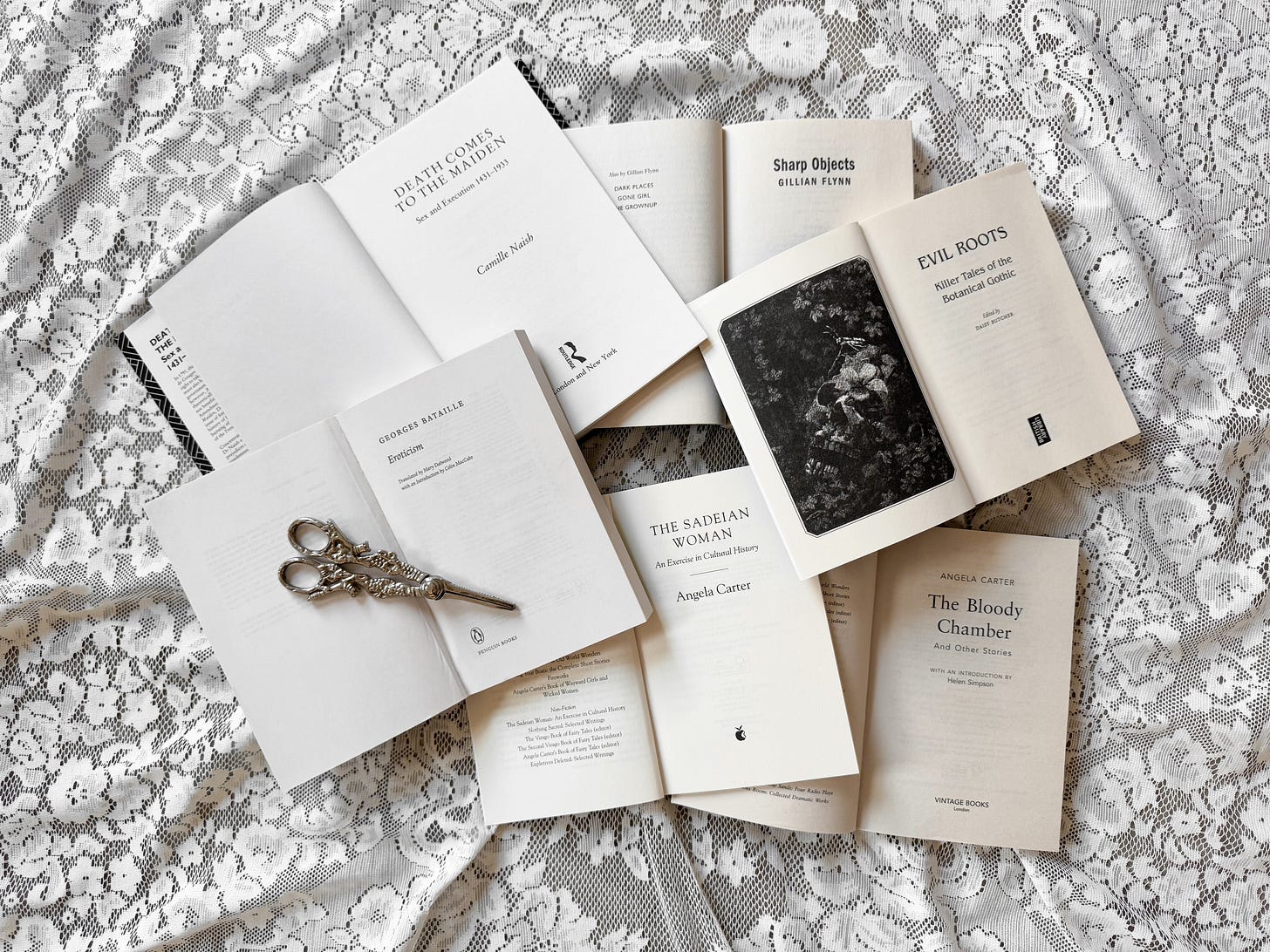
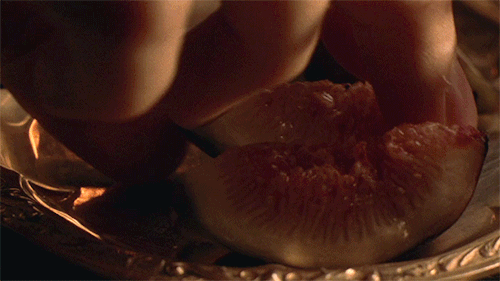



absolutely loved reading this, I am glad you had a great time in paris and I enjoyed reading all the information you gave us! ps the pictures you took are beautiful.. had to double check because I genuinely thought they were taken by a professional photographer!
let’s go together next time to paris x